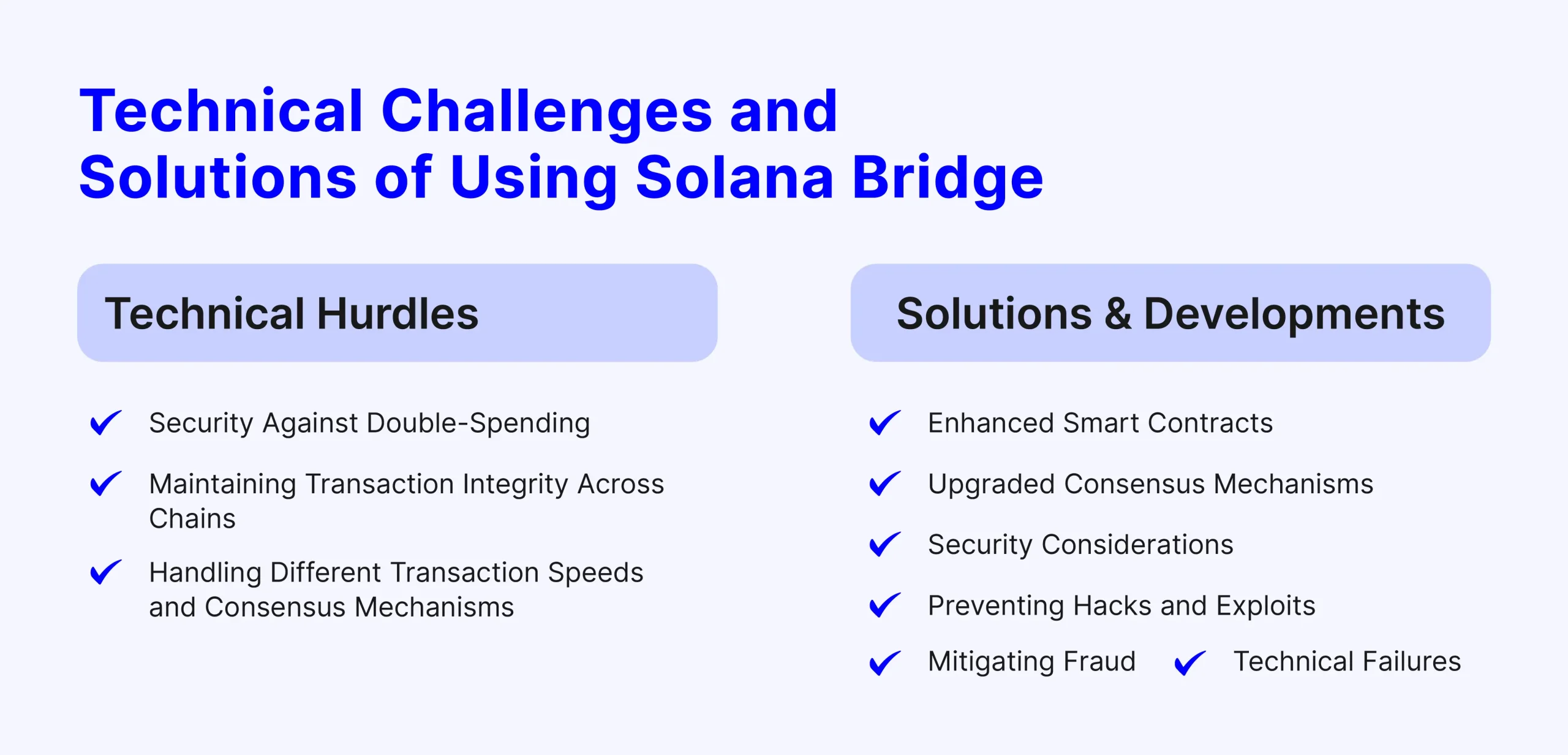
Introduction
Web3 & Blockchain Consultancy :
The Future of Blockchain Interoperability and the Role of Solana Bridges
The emergence of blockchain technology has sparked a complete era of decentralized possibilities, but one essential element is still lacking, which is fluid communication across distinct networks. As digital ecosystems grow increasingly fragmented, the ability to seamlessly interact and exchange data across different blockchain platforms is not just desirable but essential. Among the numerous players striving to solve this puzzle, Solana has emerged with its innovative approach through the use of Solana bridges.Key Takeaways
- Blockchain Interoperability: Enables seamless communication and data exchange across different blockchain platforms, enhancing functionality and user experience.
- What Are Solana Bridges?: Technological solutions that connect the Solana blockchain to other networks, facilitating the transfer of assets and data.
- Types of Solana Bridges:
- Trust-based Bridges: Rely on intermediaries for transaction management.
- Blockchain-to-Blockchain Bridges: Direct, efficient connections tailored to specific blockchain pairings.
- Future Prospects: Continued development of Solana bridges promises more robust interoperability solutions, potentially leading to universal blockchain communication protocols and enhanced security measures.
What is Blockchain Interoperability?
Blockchain interoperability refers to the ability of different blockchain systems to communicate and interact without intermediaries. It allows for the exchange of information and value across diverse blockchain networks, which can lead to enhanced functionality, improved efficiency, and lower operational costs. This capability is vital for the widespread adoption of blockchain technology, as it supports a multitude of applications from decentralized finance (DeFi) to supply chain management, creating a cohesive and inclusive digital economy.The Challenges of Interoperability
Despite its benefits, achieving interoperability poses significant technical challenges. Each blockchain has its unique architecture, consensus mechanisms, and security protocols, making seamless communication a complex task. Issues such as scalability, data consistency, and security risks need to be meticulously managed to ensure reliable cross-chain interactions.The Benefits of a Connected Blockchain World
The advantages of blockchain interoperability are numerous. For developers, it means the ability to create cross-chain applications that leverage the strengths of multiple blockchains, offering users a richer, more versatile experience. Businesses benefit from the enhanced flexibility and broader access to blockchain ecosystems, which can drive down costs and open up new opportunities for innovation. Meanwhile, for users, interoperability translates into a more seamless and integrated experience, with the ability to transact and interact across different platforms without the need for multiple wallets or interfaces.The Role of Solana in Blockchain Interoperability
Solana’s architecture offers a promising foundation for interoperability. Known for its incredible speed and low transaction costs, along with a unique consensus algorithm called Proof of History (PoH), Solana addresses some of the critical barriers to interoperability, such as scalability and efficiency. Unlike Ethereum, which can process about 15 transactions per second, Solana can give a throughput of 65,000 transactions per second, making it one of the fastest blockchains in the market.Solana’s Comparative Advantage
When compared to other blockchains, Solana not only stands out for its speed but also for its cost-effectiveness and lower energy consumption, all of which are crucial for the practical implementation of cross-chain transactions. These features make Solana an attractive platform for developers building scalable and efficient cross-chain applications.What are Solana Bridges?
Solana bridges are advanced technological frameworks designed to facilitate interoperability between the Solana blockchain and other blockchain networks. These bridges enable the seamless transfer of assets and data, overcoming the traditional barriers that have hindered cross-blockchain interactions. By enabling these capabilities, Solana bridges are instrumental for developers seeking to create decentralized applications (DApps) that are not confined to a single blockchain but can leverage the strengths of multiple ecosystems.Types of Solana Bridges
Solana’s approach to interoperability has multiple aspects, providing various types of bridges to meet diverse needs and use cases:1. Trust-based Bridges
These bridges rely on intermediaries or a group of validators who oversee and facilitate the cross-chain transactions. While they require some level of trust in these intermediaries, trust-based bridges are often faster to set up and can handle large volumes of transactions efficiently. They are particularly useful in scenarios where speed and efficiency are prioritized over decentralization.2. Blockchain-to-Blockchain Bridges
These are specialized bridges that facilitate direct connections between Solana and other specific blockchains. Designed for maximum efficiency and speed, blockchain-to-blockchain bridges are optimized for specific pairings, such as Solana to Ethereum or Solana to Binance Smart Chain, ensuring that the unique characteristics of each blockchain are accommodated.Key Projects Utilizing Solana Bridges
Several projects have successfully leveraged Solana bridges to enhance their functionality and broaden their reach across different blockchain ecosystems:Wormhole
Wormhole is a prominent example of a decentralized, bidirectional bridge connecting Solana with Ethereum. It allows for the transfer of ERC-20 tokens, NFTs, and other digital assets between the two blockchains, facilitating a more integrated ecosystem where assets and data can flow freely. Wormhole uses advanced security protocols to ensure that transfers are secure and verifiable, thereby maintaining trust among its users.Allbridge
Another significant project, Allbridge, offers a more versatile solution compared to traditional blockchain bridges. It supports transfers between Solana and a variety of other blockchains, including Binance Smart Chain, Avalanche, and even more exotic or less common networks. Allbridge’s flexibility makes it a powerful tool for users and developers looking to interact with multiple blockchains through a single, user-friendly interface. Its architecture is designed to be simple yet robust, ensuring ease of use without compromising on security. These projects highlight the practical applications and benefits of Solana bridges, showcasing their ability to break down the walls between isolated blockchain networks and create a more interconnected and fluid blockchain ecosystem.Technical Challenges and Solutions
Implementing Solana bridges involves several technical challenges that need to be addressed. Let’s discuss some of the hurdles involved in this process and the solutions being introduced to address these issues.